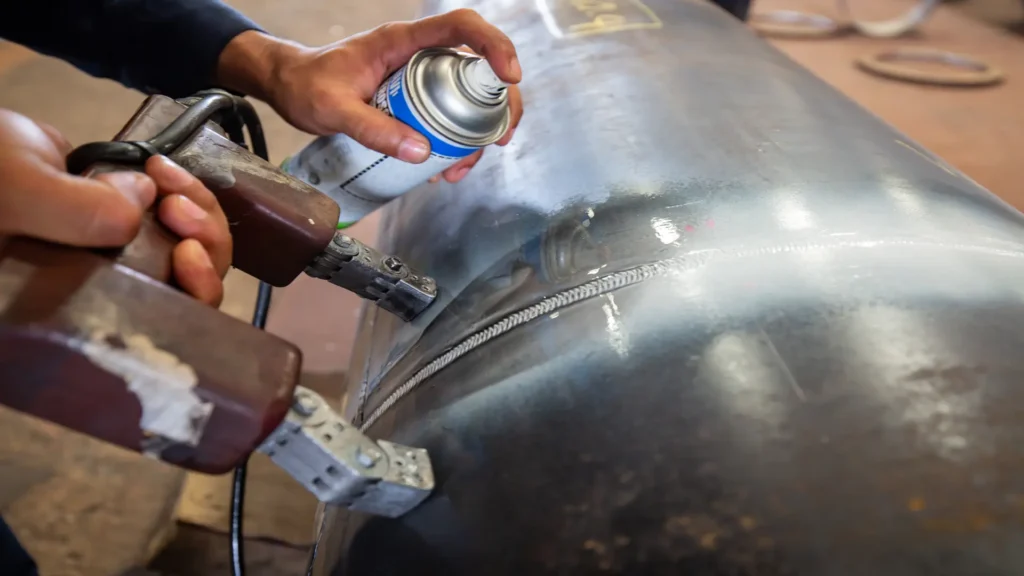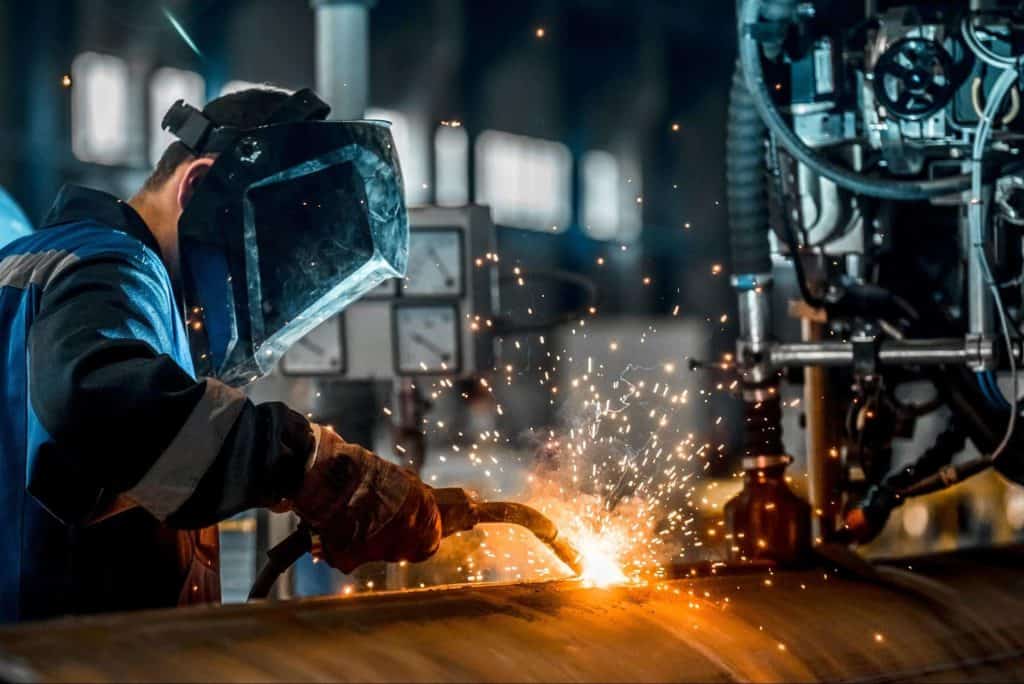The Value of Thorough Welding Inspection in Industrial Applications
In the world of commercial applications, the relevance of meticulous welding evaluation can not be overstated. It plays a vital duty in making sure the architectural stability and long life of welded components. Advanced non-destructive screening techniques permit the early discovery of prospective flaws, such as splits and insufficient blend, which, if left uncontrolled, can lead to catastrophic failings. Furthermore, adherence to strict market requirements not just ensures high quality yet likewise builds customer confidence. As we explore the diverse advantages of diligent welding evaluations, one have to think about the broader effects on security, integrity, and cost-effectiveness in commercial procedures.
Enhancing Architectural Honesty
When it comes to welding inspection in commercial applications, improving structural integrity is extremely important. The key objective of welding evaluation is to guarantee that the welds are qualified of birthing the expected anxieties and loads they will certainly come across in service.
The importance of keeping architectural integrity in bonded frameworks can not be overstated. Poorly carried out welds can result in catastrophic failings, resulting in pricey repair services, downtime, and even endangerment of human lives. Examiners play a critical duty in the lifecycle of industrial elements, providing guarantee that the welding procedure delivers the wanted strength and toughness.
Moreover, progressed modern technologies, such as phased range ultrasonic screening and digital radiography, offer improved capabilities in discovering possible weaknesses, permitting rehabilitative measures before concerns escalate. By prioritizing the stability of welds via meticulous evaluation, sectors can guarantee functional effectiveness and prolong the durability of their framework.
Identifying Welding Problems
Recognizing welding issues is an important element of making certain the safety and reliability of welded structures. These flaws can endanger the honesty of the whole setting up and, if left unaddressed, might lead to catastrophic failures. Common welding problems include porosity, fractures, incomplete fusion, and undercutting. Each of these problems occurs from particular causes, such as incorrect welding strategies, contamination, or inadequate heat control.

Knowledgeable assessors utilize both aesthetic examination and advanced non-destructive screening (NDT) methods, such as radiographic or ultrasonic screening, to spot these flaws. The prompt identification and correction of welding defects are crucial to keep the structural stability and long life of industrial elements.
Making Sure Conformity Standards
Conformity with well established requirements, such as those offered by the American Welding Society (AWS) and the International Organization for Standardization (ISO), makes certain that welds fulfill minimal security and high quality requirements. These criteria incorporate a large array of standards, consisting of material look at this web-site specifications, welding treatments, and certification of welders.
Routine audits and evaluations are essential in confirming compliance. Assessors must have a comprehensive understanding of the pertinent requirements and be experienced at utilizing numerous non-destructive testing (NDT) approaches to review weld high quality. By ensuring that welding methods straighten with compliance criteria, companies reduce the threat of non-conformity, which can result in lawful liabilities and security threats.
Furthermore, keeping conformity not only safeguards structural honesty but likewise boosts a firm's reputation in the market. Stakeholders and clients are much more most likely to trust fund firms that regularly show a commitment to quality and security via rigorous compliance. Therefore, making sure conformity standards is a vital part in the effective execution of welding in commercial applications.
Lowering Maintenance Costs

The application of advanced non-destructive screening (NDT) techniques, consisting of ultrasonic, radiographic, and magnetic bit inspections, boosts the capability to detect subsurface imperfections without jeopardizing the architectural stability of parts. By utilizing these strategies, markets can significantly prolong the service life of their devices, reducing downtime and the linked monetary worry of maintenance tasks.
Furthermore, a durable welding inspection routine sustains the optimization of maintenance routines, changing from reactive to anticipating upkeep techniques. This positive approach not only cuts unexpected failures however additionally improves source appropriation, guaranteeing that upkeep initiatives are focused and efficient. Inevitably, the financial investment in rigorous welding assessment is countered by the substantial savings recognized with lowered maintenance demands, contributing positively to the general functional performance of industrial enterprises.
Improving Precaution
Welding inspection plays a crucial role in this context, as it makes certain that all connections and joints meet rigorous safety and security requirements. Comprehensive evaluations help recognize flaws such as cracks, porosity, or insufficient combination that could jeopardize structural honesty.
To enhance safety measures, taking on sophisticated non-destructive screening (NDT) methods is important. Methods like ultrasonic screening, radiographic testing, and magnetic fragment evaluation permit for in-depth evaluation without harming the structure. These modern technologies allow inspectors to find covert imperfections early in the building procedure, assisting in prompt restorative activities. Additionally, applying a robust top quality control system that includes routine training for welders and examiners makes certain adherence to established security criteria.
Finally, promoting a society of safety and security within the company emphasizes the importance of extensive welding assessments. Urging open interaction and cooperation amongst designers, inspectors, and welders adds to a common dedication to security quality. Welding Inspection Madison. In doing so, markets can safeguard their procedures, safeguard personnel, and maintain public trust

Verdict
Detailed welding examination is crucial in commercial applications, considerably enhancing architectural honesty and dependability. By employing advanced non-destructive screening techniques, potential welding issues such as fractures and incomplete blend are determined early, guaranteeing conformity with market standards and cultivating customer trust. Strenuous assessments look what i found bring about lowered maintenance prices and add to a safer working setting. Ultimately, the attentive execution of welding inspections plays a critical function in keeping operational performance and security in commercial settings.
As we check out the complex benefits of thorough welding examinations, one must think about the more comprehensive implications on security, dependability, and cost-effectiveness in industrial operations.
The key objective of welding inspection is to guarantee that the welds are qualified of birthing the anticipated loads and anxieties they will you could check here experience in service. Efficient welding assessment plays an indispensable role in minimizing these costs by guaranteeing the stability and durability of welds, consequently minimizing the threat of early failings.Thorough welding inspection is essential in industrial applications, considerably improving structural integrity and reliability. Ultimately, the persistent execution of welding inspections plays an essential role in maintaining functional performance and safety and security in commercial settings.